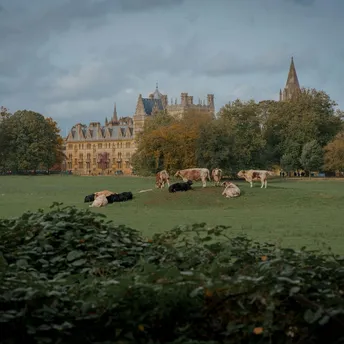Jeonju: South Korea’s Culinary Capital and a Must-Visit for Food Lovers

In South Korea, where food culture is deeply woven into the fabric of daily life, Jeonju stands out as a gastronomic gem. Known as the birthplace of some of the country’s most beloved dishes, Jeonju offers a culinary experience that goes beyond the typical tourist fare. Nestled in the southwestern part of the Korean Peninsula, this city is often hailed as the food capital of South Korea, and it’s no wonder why. For travelers in search of authentic flavors and a deep dive into the nation’s rich culinary traditions, Jeonju is an unmissable destination.
The Home of Bibimbap: Jeonju’s Iconic Dish
If there’s one dish that has put Jeonju on the global food map, it’s bibimbap. A harmonious blend of rice, mixed vegetables, marinated beef, and a generous helping of gochujang (Korean red pepper paste), bibimbap is celebrated for its colorful presentation and balanced flavors. While bibimbap can be found across South Korea, Jeonju’s version stands apart due to its emphasis on fresh, local ingredients and its use of a rich beef broth that adds an extra layer of depth to the dish.
The origins of Jeonju bibimbap are steeped in history. According to local legend, it was once a royal dish, served to kings and queens during the Joseon dynasty. Today, it continues to be a source of pride for the city, with many restaurants competing to offer the most authentic and flavorful rendition. For visitors, enjoying a bowl of Jeonju bibimbap is more than just a meal—it’s a culinary pilgrimage to the roots of Korean cuisine.
Hanok Village: A Journey Through Traditional Flavors
Jeonju’s Hanok Village, with its beautifully preserved traditional Korean houses, is not only a cultural attraction but also a hub for food enthusiasts. The village is dotted with eateries that serve classic Korean dishes made with time-honored techniques, offering visitors an opportunity to taste the flavors of the past in a setting that feels like stepping back in time.
Within the village, travelers can savor kongnamul gukbap, a hearty bean sprout soup with rice, which is a local comfort food. Light yet flavorful, the soup is a staple for Jeonju residents, particularly enjoyed as a soothing meal after a night out. Many visitors find the simplicity of the dish to be its greatest strength—each spoonful offers a delicate balance of texture and taste, with the tender bean sprouts adding a refreshing crunch.
Another highlight of Hanok Village is the chance to indulge in choco pies—a Jeonju twist on the popular snack. These handmade treats, often filled with sweet bean paste or chocolate, are sold fresh in small shops throughout the area, offering a unique local variation on a beloved Korean dessert.
Street Food Adventures: Exploring Jeonju’s Night Markets
No trip to Jeonju would be complete without wandering through its vibrant street food markets. The city is famous for its Jeonju Nambu Market, a bustling destination where visitors can sample an array of snacks and street foods that showcase the best of Korean cuisine. From savory pancakes (jeon) to sweet rice cakes (tteok), the market is a feast for the senses.
One street food that stands out is moju, a traditional drink made from rice, ginger, and various spices. This low-alcohol beverage is often enjoyed in small cups, providing warmth on chilly evenings. Paired with crispy fried snacks or savory skewers, moju offers a taste of Jeonju’s street food culture that is both nostalgic and satisfying.
Fermented Flavors: The Heart of Korean Cuisine
Fermentation plays a central role in Korean cuisine, and Jeonju’s markets and restaurants are perfect places to experience these time-honored techniques. Kimchi, Korea’s iconic fermented cabbage, is a staple at every meal in Jeonju, but the city offers more than just the standard variety. Visitors can taste different kinds of kimchi, each with its unique blend of spices, vegetables, and fermentation processes, providing a deeper understanding of this essential component of Korean meals.

Beyond kimchi, jeotgal, a fermented seafood delicacy, is another must-try in Jeonju. Often served as a side dish, jeotgal is made from salted and fermented fish or shellfish, creating an intensely flavorful accompaniment to rice and other dishes. While the strong taste may be an acquired one for newcomers, jeotgal’s complexity is revered by locals and is seen as a quintessential part of the regional dining experience.
The Art of Makgeolli: Korea’s Traditional Rice Wine
For those looking to pair their meals with something uniquely Korean, Jeonju offers some of the best makgeolli in the country. This traditional rice wine, slightly fizzy and mildly sweet, is often served in bowls rather than glasses and is meant to be enjoyed in a communal setting. Jeonju’s makgeolli houses are famous for not only the quality of the drink but also the array of side dishes, known as anju, that are served alongside it. These small plates can range from savory pancakes to grilled fish, enhancing the makgeolli experience with every sip.
A visit to one of Jeonju’s traditional makgeolli taverns is as much about the social aspect as it is about the food and drink. Locals gather in groups, sharing stories over bowls of rice wine, making it an immersive experience for visitors who want to engage with the local culture on a more personal level.
Jeonju’s Commitment to Culinary Heritage
What makes Jeonju particularly special is its dedication to preserving its culinary heritage. The city is home to the Jeonju Traditional Wine Museum, where visitors can learn about the ancient methods of making makgeolli and other rice wines. There are also cooking classes available for those who want to dive deeper into the preparation of traditional Korean dishes, offering a hands-on way to experience the local cuisine.
Moreover, Jeonju has been designated as a UNESCO Creative City for Gastronomy, an acknowledgment of its rich food culture and its efforts to promote sustainable gastronomy. This commitment ensures that future generations can continue to enjoy the flavors and techniques that have been passed down through centuries.



















